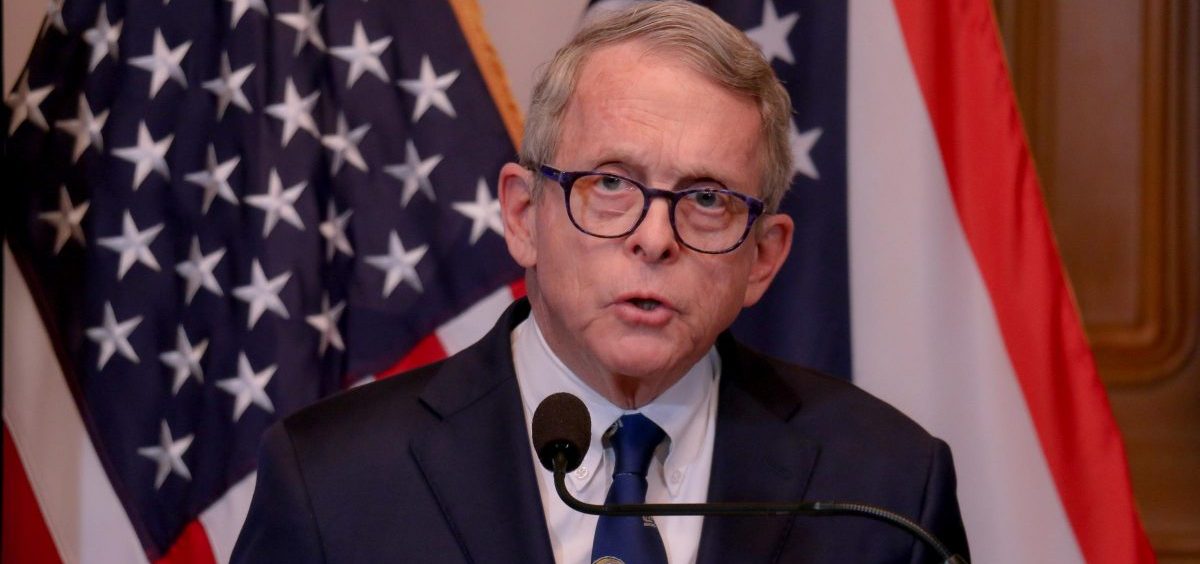News

Reopening State Will Be Slow Process, DeWine Cautions
By: Gabe Rosenberg | WOSU
Posted on:
COLUMBUS, Ohio (WOSU) — As new coronavirus cases and hospitalizations begin to decline, why shouldn’t Ohio reopen today?
With the help of an infectious diseases expert, Gov. Mike DeWine spent over an hour Thursday explaining that a fully open economy and health care system is still a while away.
“When we talk about reopening, what we’re talking about is starting down a pathway where we can get people back to work,” DeWine said at his daily press conference.
DeWine has said the process of reviving Ohio’s economy would begin on May 1, the day the state’s stay-at-home order expires.
On Thursday, he hinted towards heightened standards that both “essential” and “non-essential” businesses will have to follow. However, any specific details about those requirements – as well as which businesses will open first – likely won’t arrive until Monday.
Last week, the White House coronavirus task force released its own guidelines on how states should reopen their economies, with a three-phase approach to ease social distancing and business restictions. Each phase would require states to see 14 days of a “downward trajectory” of cases before advancing to the next step.
“We’re following the broad White House guidelines the President has set down,” DeWine said.
The governor added that Ohio will still forge its own path ahead, but he’s been in discussions with the governors of Michigan and other states to coordinate their response.
The Ohio Department of Health reported Ohio now has 14,694 cases of COVID-19, including 552 probable cases under the CDC’s expanded case definition. The state has seen 656 deaths from the disease so far, as well as 2,960 people hospitalized and 900 admitted into the ICU.
Testing remains limited, however: Ohio has just conducted 102,325 tests statewide.
Staying Safe
With Health Department director Dr. Amy Acton taking the day off, DeWine ceded most of his time during Thursday’s press conference to Dr. Mark Weir, director of the Ecology, Epidemiology and Population Health Program at Ohio State University’s Infectious Diseases Institute. DeWine invited Weir to discuss the protection recommended to keep Ohioans safe from disease.
Weir explained that the coronavirus is emitted through coughs or sneezes as droplets, which means it can spread through the air, fall out and easily contaminate surfaces. The virus lasts longest on plastics and stainless steel, where it can then be touched and cross-contaminate.
“The risk can never be zero. You just need to do everything in your power to minimize it as much as possible,” Weir says.
It’s going to be a long time before the virus simply dies out, Weir explains, so the goal should be to interrupt the infection process. That can be done by keeping at least six feet of distance, wearing masks, washing hands and cleaning surfaces.
While each of those efforts only goes so far, layering the different barriers is the most effective way of stopping the virus.
“It’s a matter of multiple parties working together, in concert, to be able to limit access of other people to the virus,” Weir says. “If you can’t contact the virus, it can’t get inside you.”
Some safe behavior can be done on the personal level, like every person who can wearing masks. But there are still some actions must be taken by businesses or building owners. For example, HVAC systems can recirculate the virus through the air, but filters and other treatments add a layer of protection.
Weir explains the modeling developed by Ohio State, which Ohio is using to shape its response, uses mathematics in an attempt to replicate these conditions in the real world. One of the reasons Ohio will move slowly on reopening the economy, he says, is so researchers can see if cases go up when certain businesses reopen, and adjust rules and guidelines accordingly.
“This is a novel virus, and these are novel approaches to fighting the surge of medical need,” Weir says. “All of these decisions that are decisions made under uncertainty with limited information.”
DeWine said he’s looking at the numbers of hospitalizations, new cases and testing capacity as he decides how to proceed. He reiterated that many people have the virus who don’t know it, and who aren’t showing symptoms, but can still spread it to others.
“They’re not going down as dramatically as we certainly would like,” DeWine said.
The governor also clarified his earlier announcement on non-essential procedures. Under the Department of Health’s order, procedures are considered essential if there’s a threat to a patient’s life, limb or organ, or if delay would worsen the disease or symptoms.
“We want doctors and other health care providers in Ohio to reach out to patients who had a case postponed, to reassess the need for that surgery or procedure based on these criteria,” DeWine said.
DeWine said that doctors should consider the current status of their patients to see if they meet one of those essential procedure criteria. However, people who need emergency care, or whose conditions are worsening, should be proactive and call their health care provider, or go to the hospital if necessary.
While the essential procedure order means hospitals have successfully raised their capacity – some to the point where they’re financially struggling – there’s still a lack of personal protective equipment across the state.
“We’re not ready for the entire health care system to instantly turn back on,” DeWine said.

